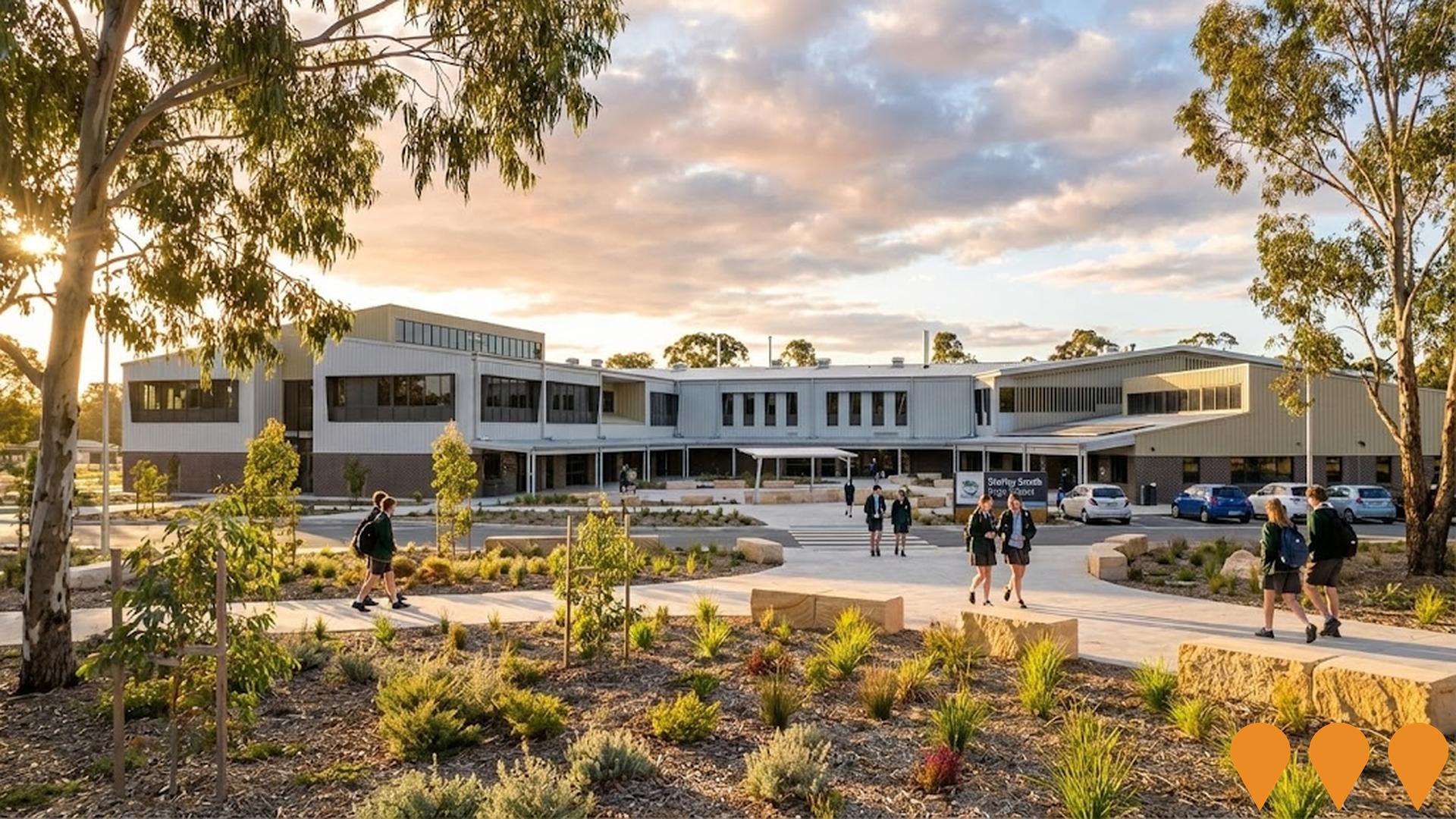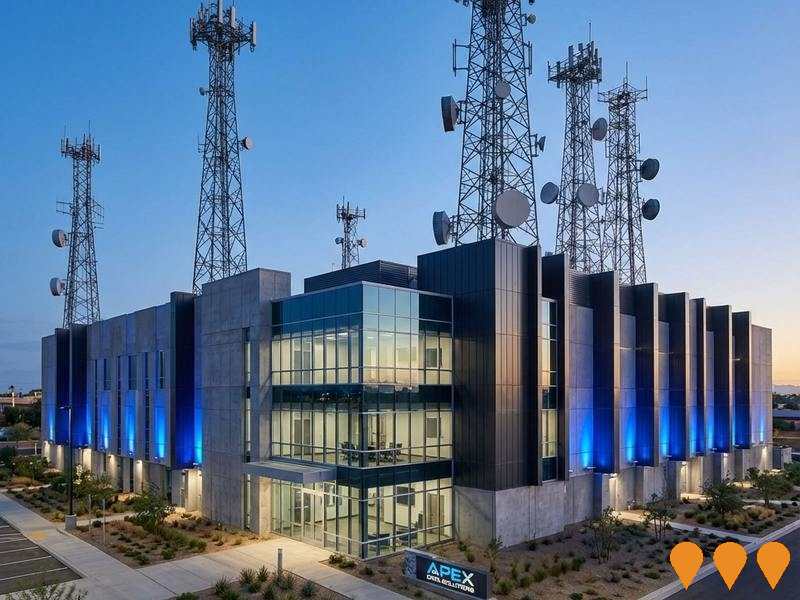Chart Color Schemes
est. as @ -- *
ABS ERP | -- people | --
2021 Census | -- people
Sales Activity
Curious about local property values? Filter the chart to assess the volume and appreciation (including resales) trends and regional comparisons, or scroll to the map below view this information at an individual property level.
Find a Recent Sale
Sales Detail
Population
Giralang has shown very soft population growth performance across periods assessed by AreaSearch
Based on AreaSearch's analysis, Giralang's population was around 3,354 as of Aug 2025. This reflected a decrease of 18 people (0.5%) since the 2021 Census, which reported a population of 3,372 people. The change was inferred from the estimated resident population of 3,346 from the ABS as of June 2024 and an additional 68 validated new addresses since the Census date. This level of population equated to a density ratio of 1,369 persons per square kilometer, which was above the average seen across national locations assessed by AreaSearch. While Giralang experienced a 0.5% decline since census, the SA3 area achieved 2.4% growth, highlighting divergent population trends. Population growth for the area was primarily driven by natural growth that contributed approximately 58.4% of overall population gains during recent periods.
AreaSearch adopted ABS/Geoscience Australia projections for each SA2 area, as released in 2024 with 2022 as the base year. For any SA2 areas not covered by this data, and for years post-2032, age group growth rates from the ACT Government's SA2 area projections, with 2022 as a base, were adopted. Over this period, projections indicated a decline in overall population, with the area's population expected to decline by 493 persons by 2041 according to this methodology. However, growth across specific age cohorts was anticipated, led by the 75 to 84 age group, which was projected to grow by 53 people.
Frequently Asked Questions - Population
Development
AreaSearch assessment of residential development drivers sees a low level of activity in Giralang, placing the area among the bottom 25% of areas assessed nationally
Giralang has recorded approximately 14 residential properties granted approval annually over the past five financial years, from FY-21 to FY-25. A total of 74 homes were approved during this period, with one more approved so far in FY-26. On average, around 0.5 people have moved to the area for each dwelling built annually between FY-21 and FY-25.
This suggests that new construction is meeting or exceeding demand, providing buyers with more options while supporting population growth. The average expected construction cost value of new properties in Giralang is $386,000. In FY-26, there have been $270,000 in commercial approvals, indicating a predominantly residential focus. Compared to the Australian Capital Territory, Giralang records about three-quarters of the building activity per person and ranks among the 19th percentile nationally, suggesting somewhat limited buyer options but strengthening demand for established properties. The new building activity consists of 15.0% detached dwellings and 85.0% attached dwellings, favouring higher-density living to create more affordable entry points for downsizers, investors, and first-home buyers.
This represents a notable shift from the area's existing housing composition, which is currently 94.0% houses, indicating decreasing availability of developable sites and reflecting changing lifestyles and demand for diverse, affordable housing options. With around 834 people per dwelling approval, Giralang reflects a highly mature market. Given the expected stable or declining population, there should be reduced pressure on housing in Giralang, potentially creating opportunities for buyers.
Frequently Asked Questions - Development
Infrastructure
Giralang has emerging levels of nearby infrastructure activity, ranking in the 22ndth percentile nationally
Ten projects have been identified by AreaSearch as potentially impacting the area. Key projects include the Kaleen Aged Care Precinct - Bullecourt Village Expansion (2021) and Mona Tait Gardens Upgrades (scheduled for completion in 2023), Kaleen Primary School Facility Upgrades (commenced in 2022), Kaleen Digital Infrastructure Upgrade (planned for Q4 2023), and Kaleen Local Centre Enhancements (expected to begin in early 2024).
Professional plan users can use the search below to filter and access additional projects.
INFRASTRUCTURE SEARCH
 Denotes AI-based impression for illustrative purposes only, not to be taken as definitive under any circumstances. Please follow links and conduct other investigations from the project's source for actual imagery. Developers and project owners wishing us to use original imagery please Contact Us and we will do so.
Denotes AI-based impression for illustrative purposes only, not to be taken as definitive under any circumstances. Please follow links and conduct other investigations from the project's source for actual imagery. Developers and project owners wishing us to use original imagery please Contact Us and we will do so.
Frequently Asked Questions - Infrastructure
Canberra Light Rail Stage 3: Belconnen to City (Bruce Alignment)
Planning and feasibility analysis for the future Stage 3 of the Canberra Light Rail network, connecting Belconnen Town Centre to the City via Bruce. The proposed corridor serves major precincts including the University of Canberra, CIT Bruce, North Canberra Hospital, and GIO Stadium. The project follows the Belconnen Transitway alignment and aims to provide high-capacity public transport to the north-west.

New Northside Hospital (North Canberra Hospital Redevelopment)
Development of a new major tertiary hospital on the existing North Canberra Hospital campus (formerly Calvary Public Hospital). The project involves an investment of over $1 billion to construct a new state-of-the-art clinical services building, expanded emergency department, and modern inpatient facilities to replace aging infrastructure.
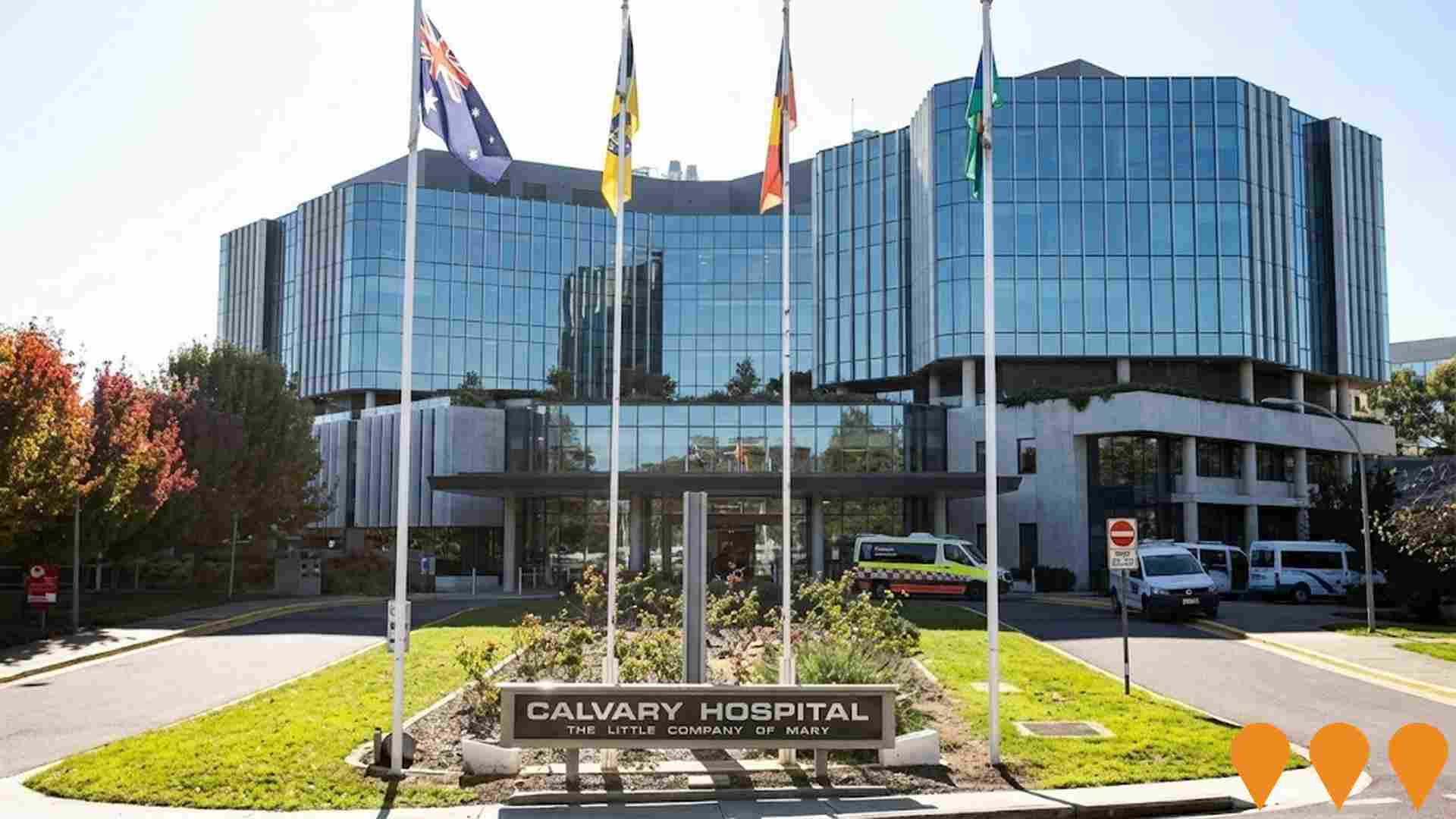
Gungahlin College East (Nicholls)
New public secondary college in Nicholls (Gungahlin East) for Years 7-10 initially, opening with capacity for 800 students and designed to expand to 1,100. Includes state-of-the-art learning spaces, performing arts centre, sports facilities and shared community use areas. Part of the ACT Government's $800 million school infrastructure program.

Kaleen Local Centre Enhancements
Potential future upgrade and modest expansion of Kaleen local shops (Kaleen Plaza) including improved access, parking, landscaping and retail floorspace. As of December 2025 no Development Application has been lodged for expansion of the plaza itself. Nearby public realm upgrades at Gwydir Square (South Kaleen) were completed in 2022, and a separate mixed-use DA at the former Eastlake Football Club site (16 Georgina Crescent) remains under assessment. This record tracks possible future plaza enhancements subject to lessee or ACT Government initiation.

Kaleen Community Hub & Mixed-Use Precinct
Proposed mixed-use community hub at the current Kaleen shops site including new retail, medical centre, childcare, community facilities and medium-density residential apartments as part of the ACT Government's local centre renewal program.

Kaleen Environmental Restoration Project
Restoration of natural habitats and delivery of water sensitive urban design works in Kaleen to improve creek health, reduce stormwater pollutants entering Lake Ginninderra, and enhance local biodiversity and amenity.
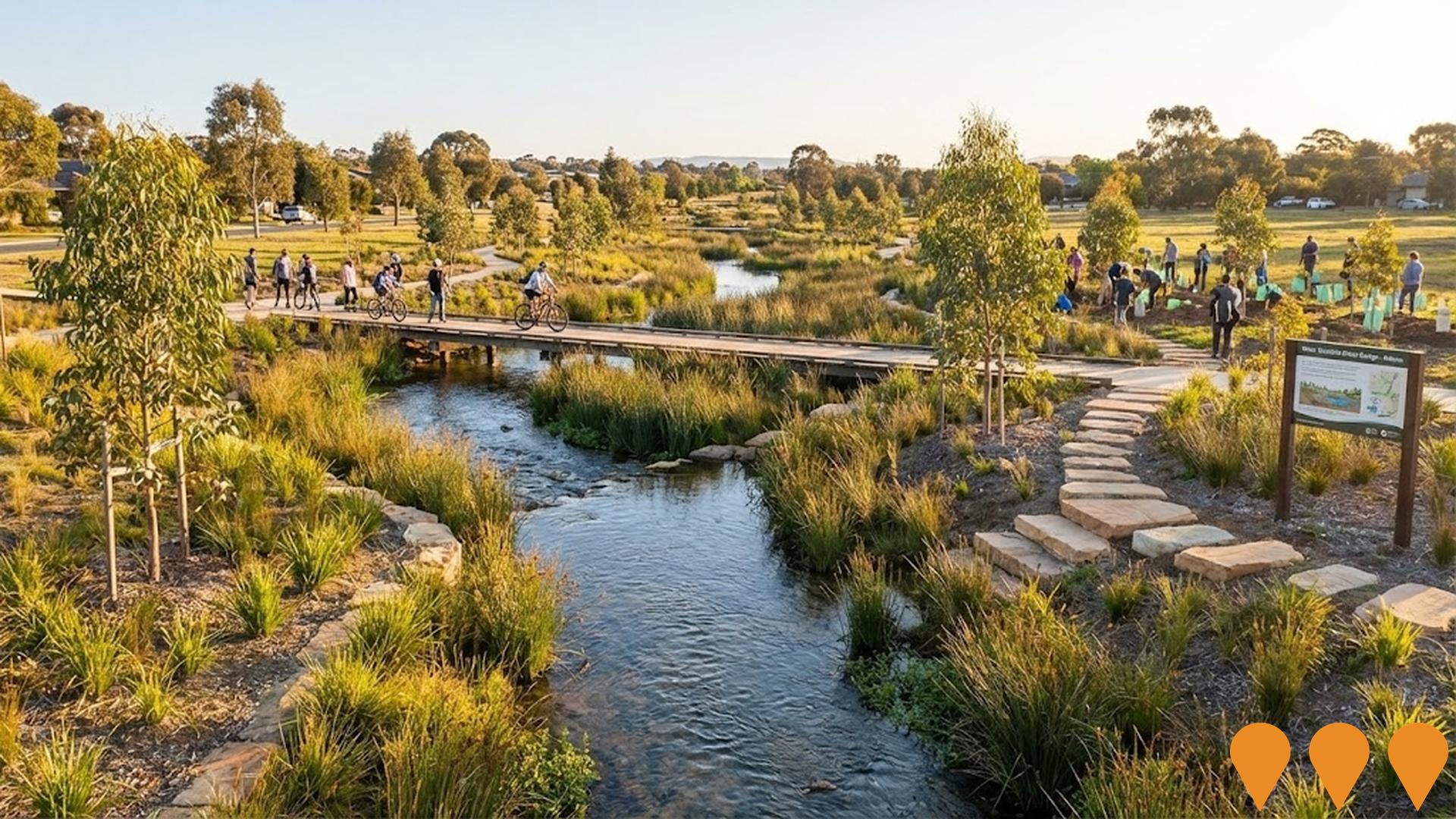
Kenny New Suburb Development
155-hectare new suburb between Watson and Harrison for 4,000+ residents. Will include diverse housing options, local centre, community facilities and connection to Nadjung Mada Nature Reserve. First land releases planned for 2025-26.
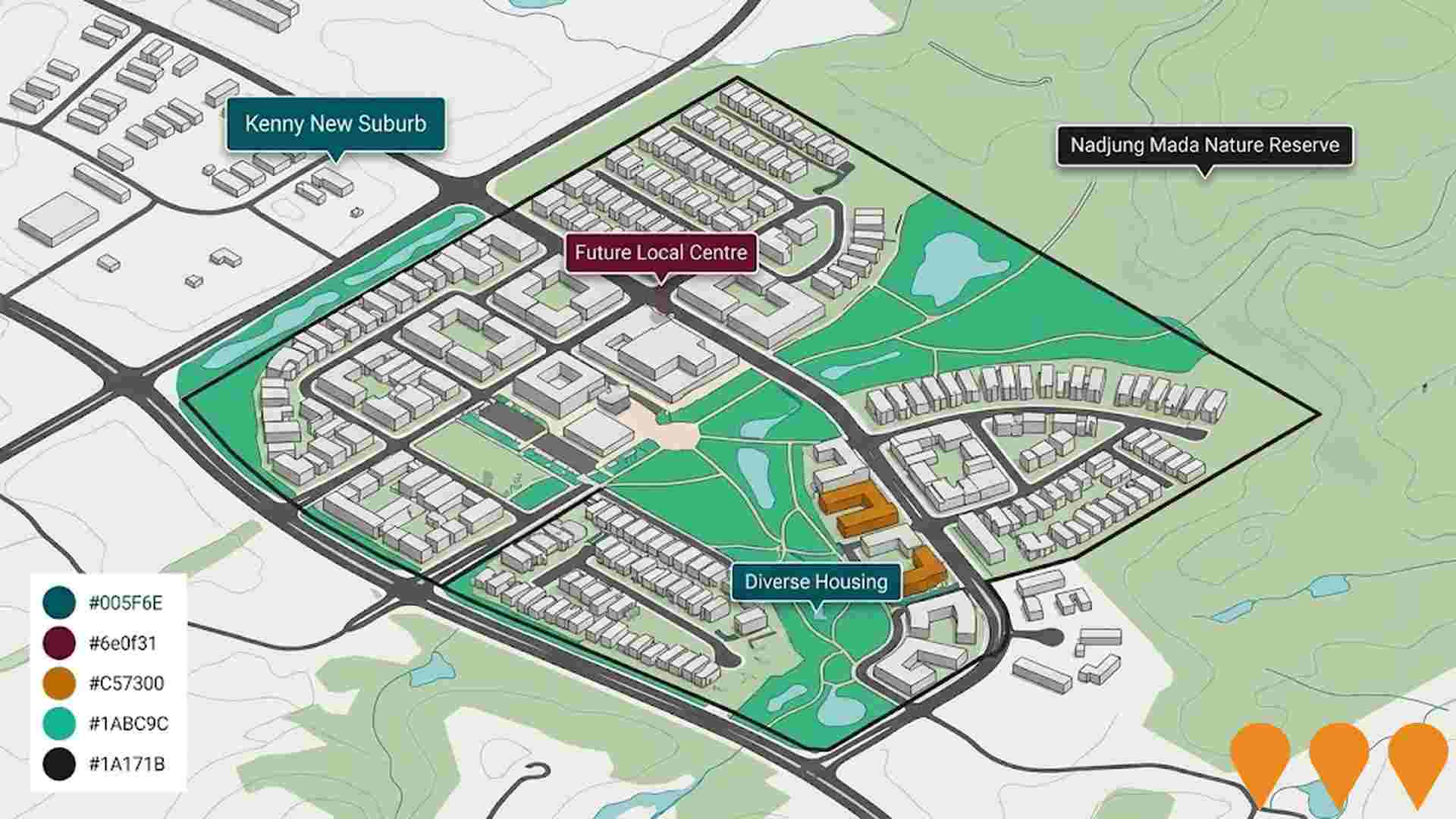
Kaleen Aged Care Precinct - Bullecourt Village Expansion and Mona Tait Gardens Upgrades
RSL LifeCare is progressing a scaled-back expansion of the Kaleen aged care precinct, adding approximately 83 independent living units and a community centre at Bullecourt Village with associated improvements to the adjoining Mona Tait Gardens residential aged care home. The revised scheme reduces height to predominantly two storeys along Warrego Circuit and Ellenborough Street following community feedback.

Employment
AreaSearch analysis indicates Giralang maintains employment conditions that align with national benchmarks
Giralang has a highly educated workforce with an unemployment rate of 3.8% as of June 2025. This is 0.4% higher than the Australian Capital Territory's rate of 3.4%.
The estimated employment growth over the past year was 2.8%. There are 1,742 residents in work and workforce participation is at 65.3%, which is below the Australian Capital Territory average of 69.6%. Key industries of employment among residents include public administration & safety, education & training, and construction. Construction has a significant presence with an employment share of 1.6 times the regional level.
However, public administration & safety is under-represented at 27.7% compared to the Australian Capital Territory's 30.4%. The area offers limited local employment opportunities as indicated by Census data. Over the past year, employment increased by 2.8%, while labour force grew by 1.6%, causing a fall in unemployment rate of 1.2 percentage points. In comparison, Australian Capital Territory saw employment growth of 1.9% and a fall in unemployment of 0.3 percentage points. National employment forecasts from Jobs and Skills Australia (May 2025) project national employment growth at 6.6% over five years and 13.7% over ten years, with varying rates across industry sectors. Applying these projections to Giralang's employment mix suggests local growth of approximately 6.5% over five years and 13.2% over ten years.
Frequently Asked Questions - Employment
Income
The economic profile demonstrates exceptional strength, placing the area among the top 10% nationally based on comprehensive AreaSearch income analysis
AreaSearch's latest postcode level ATO data for financial year 2022 shows income in Giralang is among the highest in Australia. The median assessed income is $63,927 and the average income stands at $77,202. This contrasts with Australian Capital Territory's figures of a median income of $68,678 and an average income of $83,634. Based on Wage Price Index growth of 13.6% since financial year 2022, current estimates would be approximately $72,621 (median) and $87,701 (average) as of September 2025. Census 2021 income data shows household, family and personal incomes all rank highly in Giralang, between the 88th and 89th percentiles nationally. The earnings profile shows the $1,500 - 2,999 earnings band captures 33.9% of the community (1,137 individuals), reflecting patterns seen in the broader area where 34.3% similarly occupy this range. Economic strength is evident through 38.9% of households achieving high weekly earnings exceeding $3,000, supporting elevated consumer spending. After housing costs, residents retain 87.8% of income, reflecting strong purchasing power and the area's SEIFA income ranking places it in the 8th decile.
Frequently Asked Questions - Income
Housing
Giralang is characterized by a predominantly suburban housing profile, with above-average rates of outright home ownership
Dwelling structure in Giralang, as evaluated at the Census conducted in 2016, comprised 93.8% houses and 6.2% other dwellings (semi-detached, apartments, 'other' dwellings). Compared to the Australian Capital Territory's figures from the same year, which were 69.4% houses and 30.5% other dwellings respectively. Home ownership in Giralang stood at 38.6%, with mortgaged dwellings at 41.7% and rented dwellings at 19.7%. The median monthly mortgage repayment in the area, as of 2016, was $2,167, exceeding the Australian Capital Territory average of $2,000. Meanwhile, the median weekly rent figure for Giralang was recorded at $460, compared to the Australian Capital Territory's $430. Nationally, Giralang's mortgage repayments were significantly higher than the Australian average of $1,863, while rents were substantially above the national figure of $375.
Frequently Asked Questions - Housing
Household Composition
Giralang features high concentrations of family households, with a higher-than-average median household size
Family households account for 77.9% of all households, including 36.5% couples with children, 29.2% couples without children, and 10.8% single parent families. Non-family households constitute the remaining 22.1%, with lone person households at 18.6% and group households comprising 2.9%. The median household size is 2.7 people, which is larger than the Australian Capital Territory average of 2.5.
Frequently Asked Questions - Households
Local Schools & Education
Giralang shows strong educational performance, ranking in the upper quartile nationally when assessed across multiple qualification and achievement indicators
Educational attainment in Giralang is notably higher than national averages. As of 2021, 41.2% of residents aged 15 and above hold university qualifications, compared to the Australian average of 30.4%. Bachelor degrees are most common at 23.9%, followed by postgraduate qualifications (11.5%) and graduate diplomas (5.8%). Vocational credentials are also prevalent, with 29.1% of residents holding such qualifications – advanced diplomas at 11.1% and certificates at 18.0%.
Educational participation is high, with 30.3% of residents currently enrolled in formal education as of 2021 data. This includes 11.4% in primary, 7.9% in secondary, and 5.0% pursuing tertiary education. Giralang Primary School serves the local community, enrolling 276 students as of 2021. The school focuses exclusively on primary education, with an Index of Community Socio-Educational Advantage (ICSEA) score of 1080, indicating above-average socio-educational conditions. Secondary educational options are available in nearby areas. As of 2021 data, there are 8.2 school places per 100 residents in Giralang, lower than the regional average of 15.1, suggesting some students may attend schools outside the area.
Frequently Asked Questions - Education
Schools Detail
Nearby Services & Amenities
Transport
Transport servicing is good compared to other areas nationally based on assessment of service frequency, route connectivity and accessibility
Public transport analysis indicates 28 active transport stops operating within Giralang, consisting of a mix of bus services. These stops are served by 5 individual routes, collectively facilitating 1,063 weekly passenger trips. Transport accessibility is rated as excellent, with residents typically situated 183 meters from the nearest transport stop.
Service frequency averages 151 trips per day across all routes, equating to approximately 37 weekly trips per individual stop.
Frequently Asked Questions - Transport
Transport Stops Detail
Health
Health outcomes in Giralang are marginally below the national average with common health conditions slightly more prevalent than average across both younger and older age cohorts
Giralang shows below-average health outcomes, with common conditions more prevalent than average across both younger and older age groups.
Approximately 58% of its total population (1,938 people) has private health cover, a rate exceptionally high compared to other areas. The most prevalent medical conditions are asthma and mental health issues, affecting 9.5% and 9.2% of residents respectively. However, 66.4% of residents report no medical ailments, slightly lower than the Australian Capital Territory average of 68.1%. Giralang has an 18.8% elderly population (aged 65 and over), with 630 people falling into this category, which is higher than the ACT's 15.3%. Overall, its health profile aligns broadly with that of the general population.
Frequently Asked Questions - Health
Cultural Diversity
Giralang was found to be more culturally diverse than the vast majority of local markets in Australia, upon assessment of a range of language and cultural background related metrics
Giralang's population showed higher cultural diversity than most local markets, with 22.5% born overseas and 19.5% speaking a language other than English at home. Christianity was the predominant religion in Giralang, accounting for 43.3%. Notably, Judaism had an overrepresentation of 0.4%, compared to the Australian Capital Territory's average of 0.1%.
In terms of ancestry, Australians made up 25.1% of Giralang's population, English 24.4%, and Other groups 9.3%. Some ethnic groups showed significant differences: Croatian was overrepresented at 1.2% (regional average: 0.8%), Korean at 0.6% (0.4%), and Polish at 0.9% (0.8%).
Frequently Asked Questions - Diversity
Age
Giralang's population is slightly younger than the national pattern
Giralang's median age is 38 years, higher than the Australian Capital Territory average of 35 but equal to Australia's median age of 38. Compared to the ACT, Giralang has a higher proportion of residents aged 65-74 (11.2%) but fewer residents aged 25-34 (12.6%). Between the 2021 Census and the present, the 75-84 age group has increased from 4.3% to 6.2%, while the 15-24 cohort has risen from 9.4% to 11.0%. Conversely, the 25-34 cohort has decreased from 14.1% to 12.6%, and the 65-74 group has fallen from 12.5% to 11.2%. By 2041, demographic modeling projects significant changes in Giralang's age profile. The 75-84 cohort is expected to grow by 14%, adding 30 residents to reach 240. Residents aged 65 and above will account for 100% of population growth, indicating a trend towards demographic aging. Meanwhile, the 45-54 and 15-24 cohorts are projected to experience population declines.

